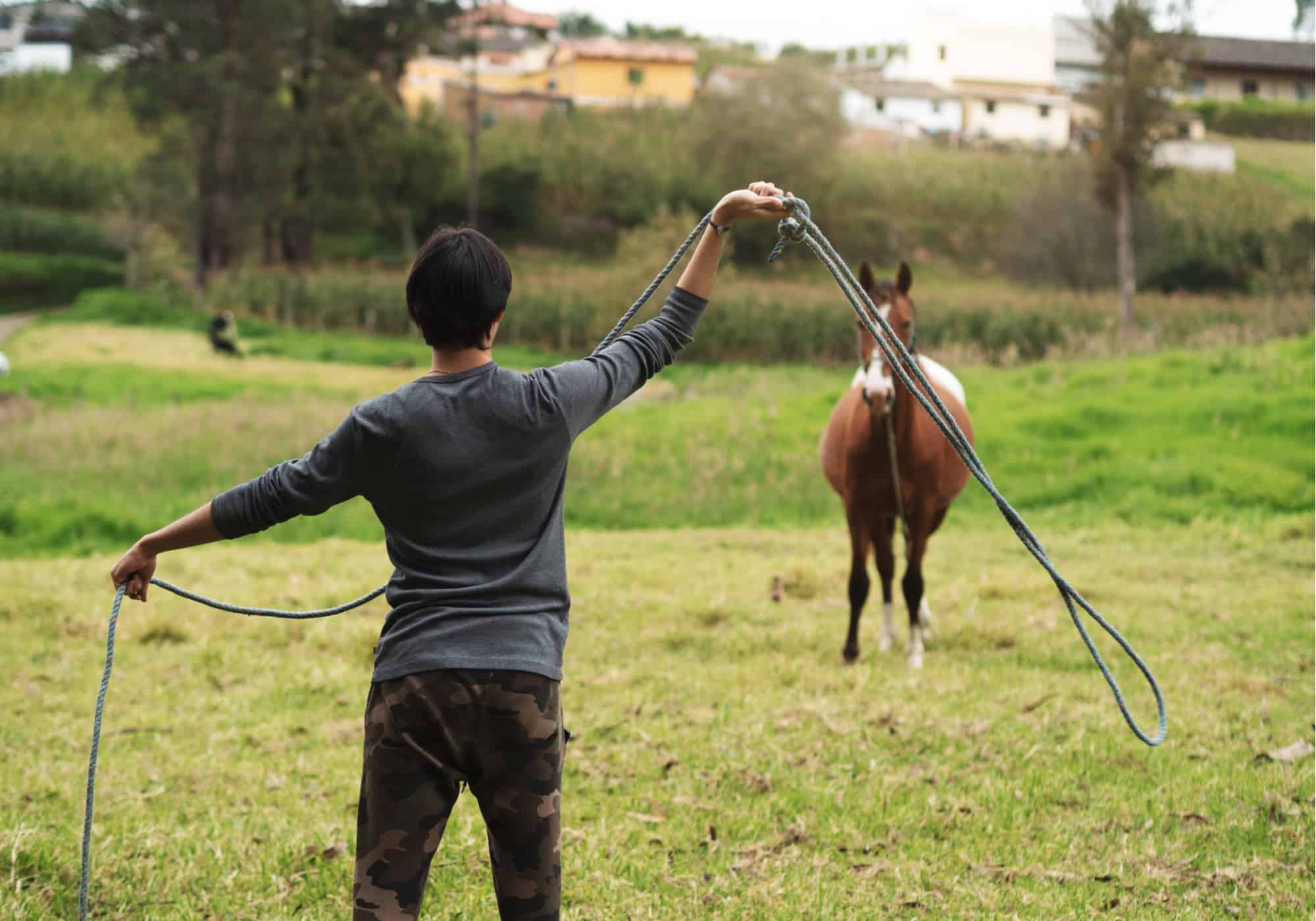When you are a horse owner, one of the things you should be able to do is to easily catch your horse. You don’t want to be chasing your horse down every time you want to ride, groom them, or walk them in the pastures. It’s not just frustrating, but in the end, both of you will be exhausted and will probably not enjoy the activity that follows.
Here is a simple guide on how to catch a horse that will make the process hassle-free so you can quickly indulge in activities you both love.
Building Trust With Your Horse
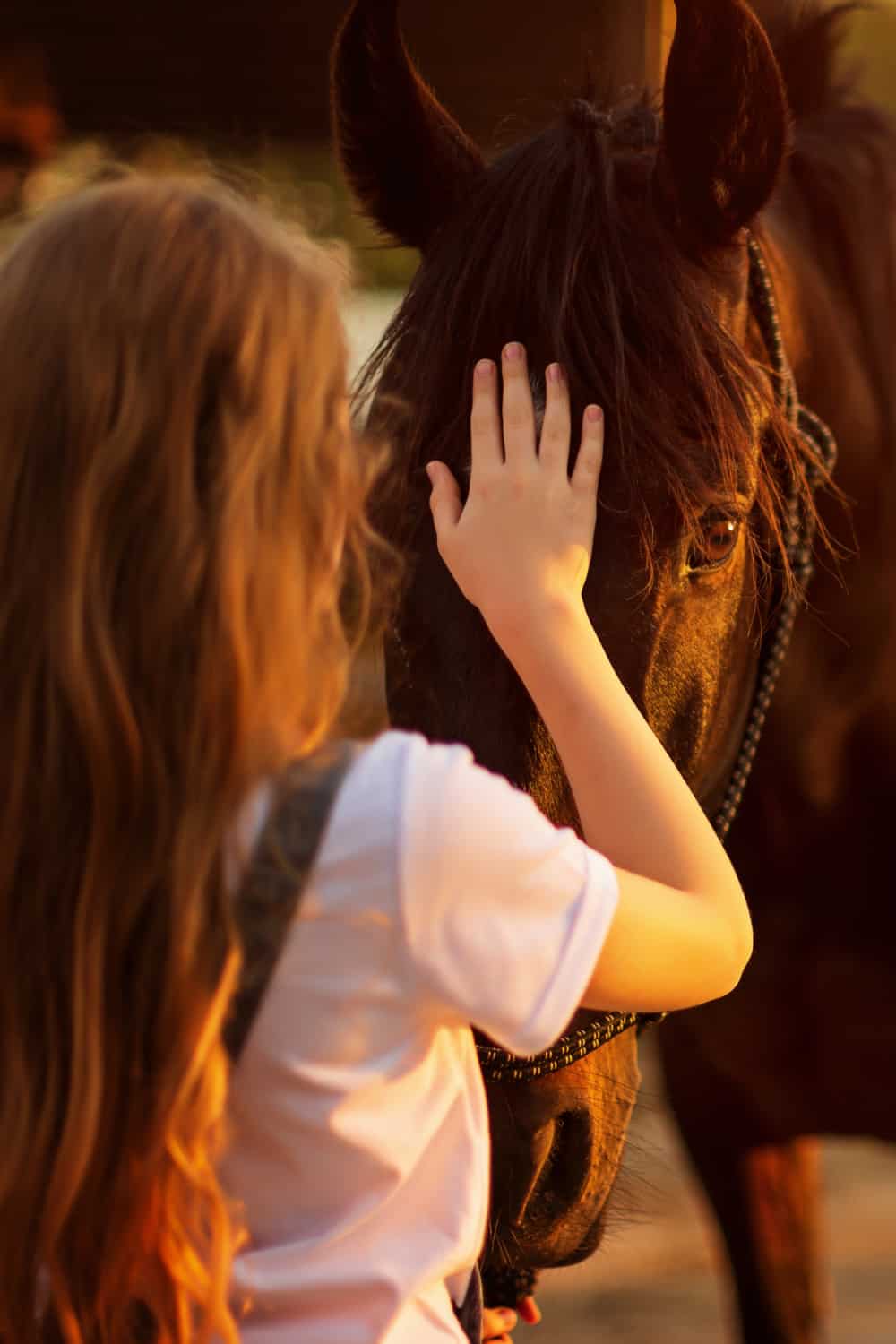
To be able to easily catch your equine, one of the things you should first try to do is teach them that being caught doesn’t always mean being subjected to hard work or discomfort.
You will want to make your horse feel comfortable around you so they don’t run away whenever they sense that you are about to make them go through anything they perceive to be a negative experience.
To do this, spend more time with your horse without trying to catch them. Look for something to do in the pastures or stables that doesn’t involve approaching the animal. If you are cleaning up the dung or checking for broken fences, for instance, do so without coming close to your horse.
If the horse comes near you, do not reach out to catch them. They want to spend some time with you, so let them. After a while, walk away and make sure they can see you leave so they can be confident that you are not there to catch them.
Make visits like this three to four times a day keeping each as brief as possible. Multiple short visits will typically be more effective than one long visit. They will get your horse to trust you more, which will make them easier to catch.
5 Simple Steps to Effectively Catch Your Horse
If done properly, catching a horse can be a very easy process. Below are some steps to help you. Bring your halter and a treat.
Step 1: Approach the Horse the Right Way
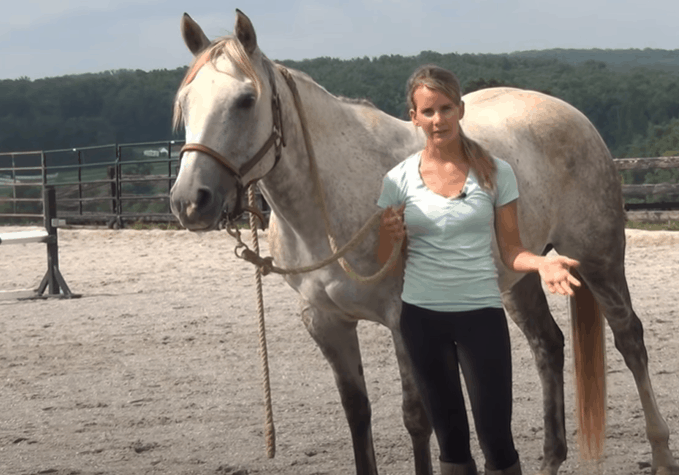
The best way to walk to your horse will be from the front. You don’t want to sneak on them from behind, as this can spook them and cause them to kick out or even run away.
Talk to the horse as you walk toward them. Use a smooth, friendly tone so they know you don’t mean any harm.
Do not run; take easy, slow steps so you don’t scare the animal. If they seem frightened or start to walk away, stop and give them some time to calm down before trying again. Do not start chasing after them, as this will frighten them even more.
It is also important to avoid overstretching your arms especially the one carrying the halter. If the horse recognizes the halter, they will know what you intend to do and may start panicking or running away. Keep your arms down so they look more neutral and less intimidating.
Step 2: Pet and Relax the Horse
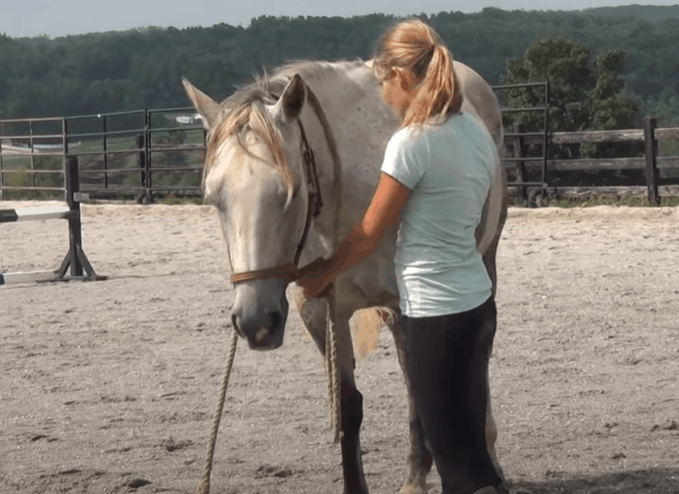
Once you are close to the horse, slowly reach out and give them a gentle caress on their neck and face. You can use smooth, even strokes too. Your aim is to appear as nonthreatening as possible, so do not do anything that could startle them. Keep petting them until they get used to you being around them.
Now, step back to ‘release’ the horse. Stand with a pose that tells the animal that you mean well – feet together and arms down. It will make them trust you more.
Wait for a few seconds then walk back to the horse and pet them again, gently stroking their face and neck. If there are any flies on the equine’s face, swat them away.
It would help to talk to the animal in a calm voice too; they may not understand what you are saying but just hearing your voice can make them know you don’t mean any harm.
Keep petting and releasing the horse for about five minutes. Each time you go back to pet, spend an extra few seconds with the animal. You will know they are calm if they lower their head to receive your touch or if they continue to eat while you are caressing them.
Step 3: Put the Halter Around the Horse’s Head
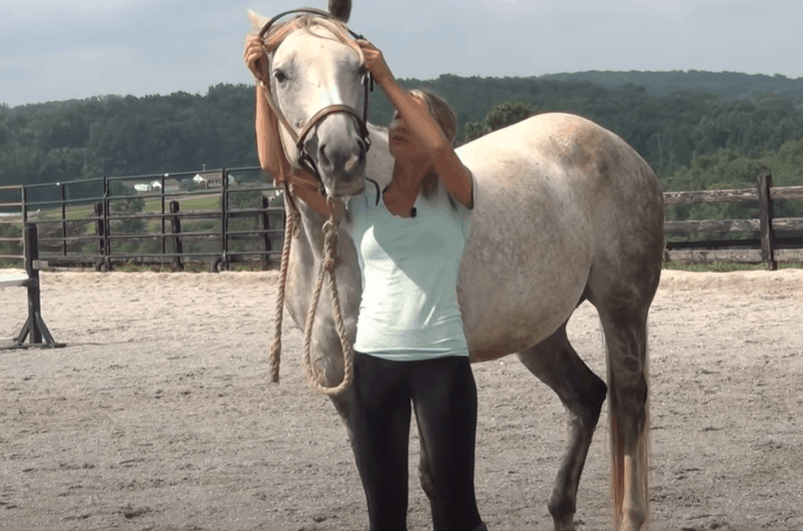
If the horse appears completely calm, you can go ahead and slide the halter onto their head. Talk to them as you do; you can tell them how good they are and how beautiful they look. They will appreciate the compliments and will continue to stay calm.
Bring your other hand around the animal’s neck to secure the halter around the back of their head. Once secured, continue caressing the horse and keeping them calm.
Also, check to see the halter isn’t too tight; you don’t want it digging into the animal’s face. You should be able to slip two fingers between the halter and the horse’s face without experiencing difficulty.
For more information on how to halter a horse, check out this video.
Step 4: Reward Your Horse
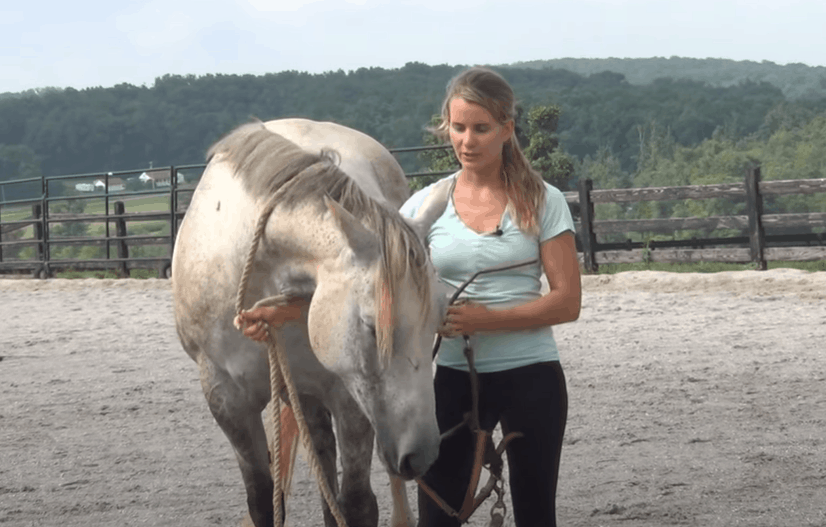
No matter how long it took to catch the horse, once you have the halter in place, reward the animal with treats. You may even hand-graze them as you pat and praise them for being a good boy or girl.
Never punish your horse when you catch them and do not saddle them up or work them immediately. The most important thing is to teach them that what happens when they don’t avoid you is more rewarding than trying to run away from you.
Step 5: Lead the Horse
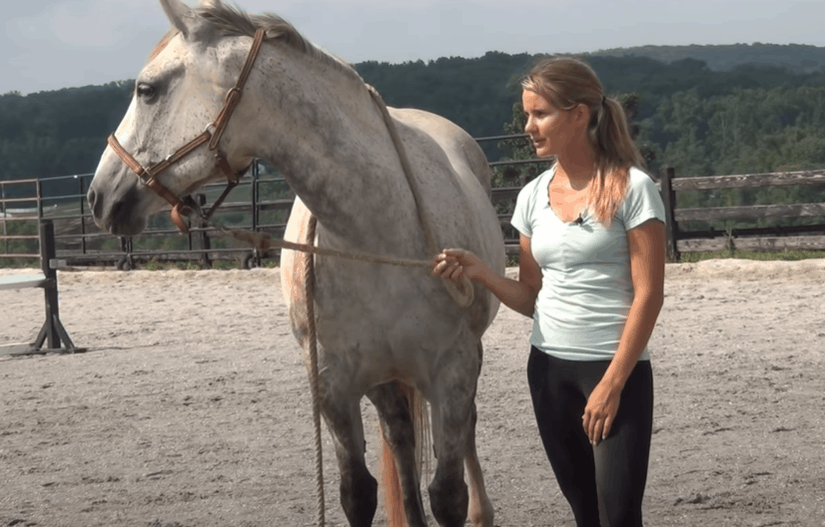
After you have secured the halter in place, leave a section of the lead rope hanging between you and the equine. Now, start leading the horse slowly to where you want them to go.
Don’t tug the rope too hard or you will startle the animal and cause them to start pulling back. You need to apply just a little pressure and the horse will understand you want them to follow you.
Additional Tips for Catching a Horse
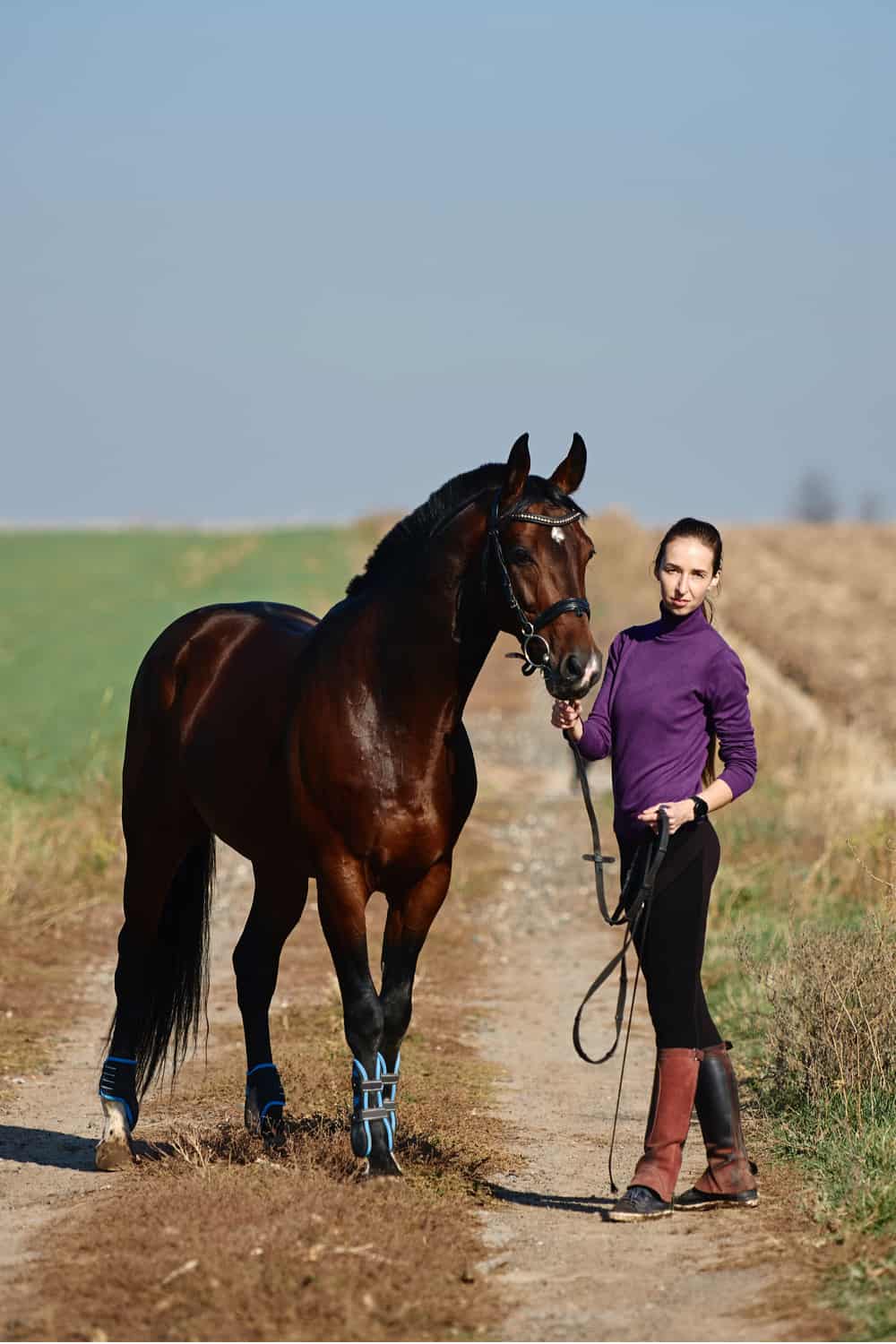
Put Yourself in Your Horse’s Shoes
Try to understand what you are asking the horse to do from their point of view. Even if they are not scared of you, you are still asking them to leave the companionship of their mates. The animal’s reluctance may be just because they want to spend a little more time with others in the pasture, so go slow on them.
Make Getting Caught Pleasant for the Horse
When you catch your horse and bring them in to work, get cleaned up, or saddle up for a ride, do everything you can to make the experience enjoyable for the horse.
Get them some treats, feed them grains, and praise them whenever they do something well. You could also vary up the work so they can stay interested.
Don’t Expect the Horse to Come to You Immediately
This is especially true if you just bought your horse or dealing with one that does not want to be caught.
It may take a little longer before the horse learns to trust you and not run away when you approach them. Some horses can take weeks before they get in the habit of not avoiding the owner.
Meanwhile, take a few minutes to calm down before approaching your horse so they don’t pick up on your panic and stress.
How to Deal With a Hard-to-Catch Horse
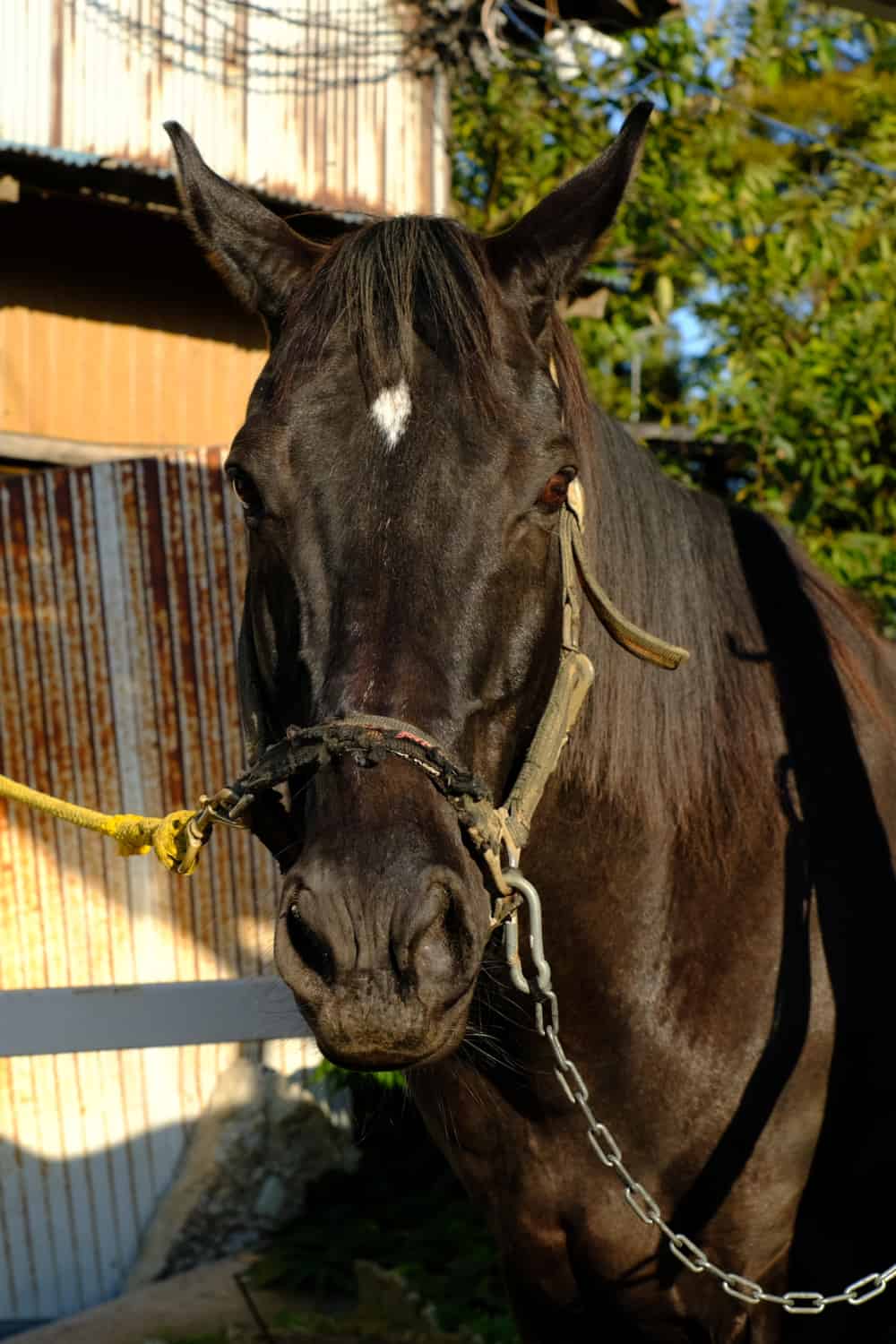
If your equine only runs away when they see you with a halter, then the best way to deal with this is to always approach them with a halter over your shoulder. Teach the animal that just because you have a halter doesn’t mean you are going to take them to work.
Sure, you can bribe your horse with treats, but this will only be a short-term solution. You want your horse to allow you to catch them without having to bring them a carrot every time.
Plus other horses who see you bring treats may think resisting to get caught is a good thing and they too may start showing reluctance whenever you try to catch them. At some point, you won’t be able to catch any of your horses without having to bribe them first.
Visit your stubborn horse frequently with a halter. You don’t even have to put it on them; your goal is to make them understand that your appearance doesn’t always mean unpleasant work.
The Takeaway
Nobody wants to always have to chase their horse down whenever they need to saddle them up or get them to do something. Hopefully, with the information shared here, you can now be able to catch your horse more easily.
The important thing is to get them to understand that your presence doesn’t always mean unpleasant experiences. And whenever your horse doesn’t give you trouble catching them, reward them. That way, they will start to learn that accepting to be caught is more enticing than avoiding it.
